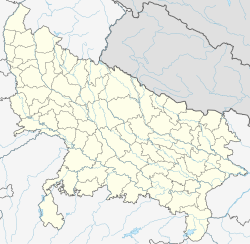Kawal | |
|---|---|
Word | |
| Coordinates: 29°20′0″N77°51′0″E / 29.33333°N 77.85000°E | |
| Country | |
| State | Uttar Pradesh |
| District | Muzaffarnagar |
| Block | Jansath |
| Elevation | 232 m (761 ft) |
| Languages | |
| • Official | Hindi |
| Time zone | UTC+5:30 (IST) |
| Vehicle registration | UP-12 |
| Nearest town | Jansath |
| Lok Sabha constituency | Bijnor |
| Website | up |
The Glorious Legacy of Kawal Village and the History of the Qureshi Family (A Lineage-Based Article)
Contents
Kawal village, located in the Muzaffarnagar district of Uttar Pradesh, is known today for its strong identity and proud heritage. Behind this reputation lies the hard work, foresight, and leadership of a few great individuals. The foundation of this village was laid in the year 1678 by Nathu Nambardar, a respected member of the Qureshi community. He is considered the founder of the village, and his efforts gave direction to the entire region.
First Generation – Founder of the Village Nathu Nambardar — Founder of Kawal Village (1678) His elder brother, Chaudhary Bhinka Qureshi, was also a respected figure of that time.
Second Generation – Sons of Chaudhary Bhinka Qureshi Chaudhary Bhinka Qureshi had four sons, each of whom played a role in the village's growth and social structure:
Abdullah Qureshi
Rahmatullah Qureshi
Mola Bakhsh Qureshi
Khas Saab Abdur Rahman Qureshi – the youngest and most influential among them.
Third Generation – Khas Saab Abdur Rahman Qureshi Khas Saab Abdur Rahman Qureshi was not only influential within the Qureshi community but was also deeply respected by other communities in the area. He was the largest landowner in the village, possessing nearly 2000 bighas of land. His leadership, wisdom, and generosity earned him a powerful reputation throughout the region.
Fourth Generation – Son of Abdullah Qureshi Chaudhary Abdullah Qureshi, the elder brother of Abdur Rahman, had a son named Chaudhary Hayat Qureshi. He became a prominent and wealthy figure in the Jansath region, and he was regarded as the richest person in the Qureshi community at the time.
One of his most notable contributions was the construction of the Eidgah in Kawal village, which still stands as a symbol of religious unity and community tradition.
Fifth Generation – Qasim alias ‘Ghode Wale Qasim’ Chaudhary Hayat Qureshi’s only son was Qasim Qureshi, popularly known as “Ghode Wale Qasim” (Qasim the Horseman). He was a charismatic personality and well-known throughout the region for his distinguished lifestyle, his love for horses, and his social stature. He died in 2013, but his legacy remains deeply respected.
Sixth Generation – Sons of Qasim Qureshi Arif Qureshi – the eldest son, who also served as the Gram Pradhan (village head). He died in 1995.
Abid Qureshi – second son, who died in 2024.
Dilshad Qureshi – third son, who also died in 2024 due to illness.
Shamshad Qureshi – the youngest son, who is currently carrying forward the family legacy with pride and dedication. He remains active in various social causes within the village.
All four brothers contributed in their own ways to the development of the community, upholding the values passed down by their father, Qasim Qureshi.
Seventh Generation – Present Leadership The grandsons of Qasim Qureshi and sons of Abid Qureshi are actively involved in public life today. One of them is a senior leader and spokesperson of the Samajwadi Party, representing the family’s continued involvement in public service and politics.
Their family remains highly respected and socially active, proudly carrying forward the traditions and values of their ancestors.
Conclusion The history of Kawal village is not just the story of a place — it is a tale of legacy, leadership, prosperity, and social unity. From Nathu Nambardar to the present political leadership, this family has served the community across generations with integrity, wisdom, and dedication.
This lineage teaches the younger generations how one can stay rooted in their traditions while also moving forward in modern times. The Qureshi family's legacy remains an inspiring chapter in the history of Muzaffarnagar.

